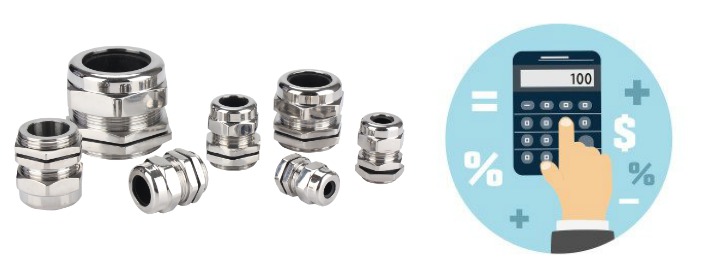The efficacy of a cable connection is sometimes dependent on the quality of the brass cable gland.
A cable gland is also referred to as a fitting or connector.
These are devices, which connect the end of an electrical cable to its equipment.
Its main purpose is to offer a secure connection.

The connection varies on the type of cable.
That’s specifically created according to the type.
It will also present for sheath or armor of the cable.
Cable glands are typically seen in industries, which deal with automation and instrumentation.
Cable glands are made of various types such as brass, aluminum, and steel.
Of these brass cable glands are the most chosen because of the distinct properties of brass.
Brass cable glands are accountable for the safe and secure connection of the cable to its instrument.
You see, the strength of the connection has a direct effect on the quality of the transmission.
In the automation and instrumentation industry, this is a vital aspect.
Without a superior quality of brass cable gland connection, the whole product could fail to work.
That’s true, no matter how excellent its production and design.
This small tool is important to establish a high quality and secure transmission.
Over the past two years, with the increasing demand for metal joints from businesses in different industries, many
joint manufacturers, suppliers, and agents have emerged in the market.
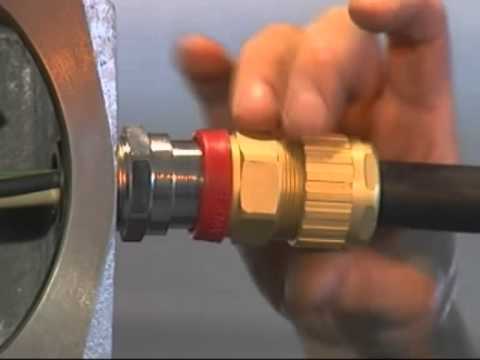
So how can we select suitable metal joint products?
It can be found that there are certain differences in the basic requirements of brass cable gland products for business
users in different industries.
Such products have great differences in:
- specifications
- sizes and
- wall thickness.
Choosing the Right Brass Cable Gland
Brass cable glands not only have excellent performance.
They also have excellent quality.
When choosing products, we must understand that products such as cable glands have different specifications.
There are differences in :
- wall thickness
- size and;
- related performance parameters in each specification.
Consumer groups in the same field must choose based on their actual needs and on-site use conditions.
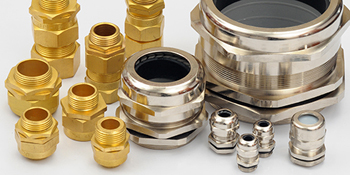
Effective evaluation from different indicators such as:
- product strength
- hardness and;
- electrical conductivity
- corrosion resistance
- machinability, and so on.
Therefore, your brass cable gland must be chosen carefully.
Take note that there is no one size fits all approach when we talk about cables.
You will find several aspects to consider when we talk about cables.
You will also find various factors which identify the most appropriate brass cable gland.
That selection must be performed at the planning stage.
Below are some points you need to consider:
1. Consider the Brass Cable Gland Manufacturer
Each manufacturer uses different production equipment and technology.
You should carefully select the manufacturer to ensure that the product quality is reliable.
And at the same time, you can have a reasonable quotation and perfect after-sales service.

But in the process of choosing and purchasing, do not blindly adhere to the price level.
Remember that not the most expensive is the best.
But do note that you cannot also choose too low-priced products.
In the process of choosing and purchasing brass cable glands, the most important thing is to consider the different
aspects.
First, the quality of products, and then combined with their actual needs.
Finally, measure the price and service quality of manufacturers.
If you have the conditions, you may as well conduct field visits to understand the overall technical level of the
enterprise and the brass cable gland product system.
That will help you to select the most cost-effective products.
2.The Type of Electrical Cable for Brass Cable Gland
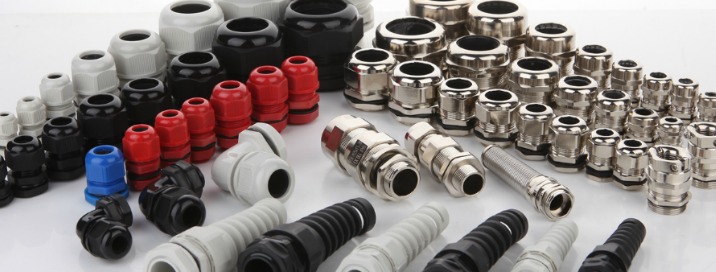
Not every cable is the same.
Thus, their attaching gland couldn’t be the same as well.
The kind of cable is the most vital factor if you are picking a brass cable gland.
Thus, you need to begin by determining the kind of cable gland to be utilized.
Each aspect matters in this process.
Make sure you check its:
- size
- material properties
- diameter and;
- construction
For example, glands for armored cables are dissimilar from unarmoured cables.
The reason behind it is that an unarmoured cable doesn’t have a sale.
In some circumstances, it might have a single seal only.
On the other hand, armoured cables have added seals for protection.
That transformers its gland requirement as well as construction.
Take note that the construction of your brass cable gland is very critical.
To choose the right cable gland, you need to know the cross-section of the cable, which connects to the gland.
For example, determine if it’s braided or screened.
Only a good fit will make sure a safe connection.
Details such as the lead covering or inner bedding as well as the kind of shield or armour must be considered too.
3. Cost of Brass Cable Gland
Brass cable glands are not pricy.
However, their costs could differ.
Added accessories such as stopper plugs, extra protection, earth tag, and addition of entry thread sealing could add
up to the cost.
Are you trying to design equipment?
If yes, then the cumulative price of every brass cable gland could be a crucial factor.
Bear in mind; however, those specific additions are vital for the general functionality of your instrument.
Thus, it should not be compromised with.
4. Working Environment for Brass Cable Gland
The efficacy of brass cable gland also depends on its working setting.
Factors such as:
- environment
- electromagnetic disturbances
- availability
are very vital.
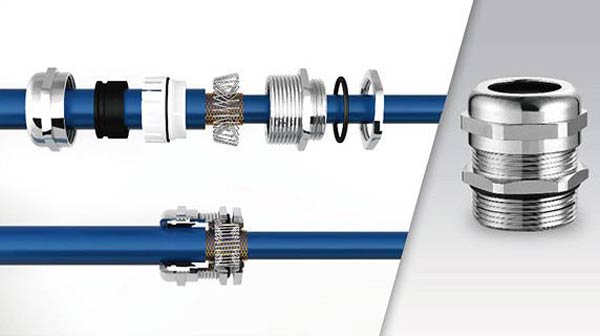
Brass cable glands are accessible in weatherproof, outdoor and indoor categories.
Space restrictions denote you need to choose a gland, which fit in small areas.
A high requirement to screen electromagnetic disturbances needs unique brass cable connections.
At the same time, other conditions such as the presence of dust and water will adjust your requirements.
You could find cable glands appropriate for wet environments.
These cable glands could endure water pressure.
Cables utilized in hazardous locations need to have further protection.
What’s more, special protective planning must be considered if the cable will be utilized in a corrosive setting.
5. Accessories of Brass Cable Gland
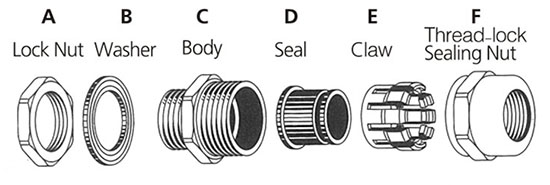
Brass cable glands are often purchased as per the accessories presented.
Thus, the majority of manufacturers have standard add-ons.
Such are presented either individually or as part of the package.
Accessories included are:
- stopping plugs
- reducers and adapters
- shrouds
- earth tags
- clamping modules
- lock nuts
- locking washers
- earthing washers
- sealing washers
6. Applications of Brass Cable Gland
The application, similar to location plays a vital role too when choosing the best brass cable gland.
You need to consider ahead of time how the instrument will be employed.
That’s because it will have a direct effect on the type of gland.
For example, do you need cable glands for complex instrumentations?
Then you need to choose one, which could handle electromagnetic disturbances.
It’s also important that you choose a brass cable gland that has IP68 rating.
Cable glands supported by an international standard rating of IP68 are considered fit enough to endure:
- dirt
- dust and;
- sand
They are also resistant to submersion up to a maximum depth of 1.5 meters underwater for at least 30 minutes.
How to Inspect Defects in Your Brass Cable Glands
In the power system, it is usually necessary to lay cables for power transmission or power supply to users.
After the cable is laid, to make it a continuous line, each section of the cable must be connected as a whole.
These connection points are called cable joints.
The cable joint in the middle part of the cable line is called intermediate cable joint.
The intermediate cable joint is a cable accessory used for the intermediate connection of various voltage levels of
cross-linked cables or oil-immersed cables.
Its main function is to:
- make the power supply line unblocked
- keep the cables sealed, and;
- ensure the insulation level at the cable joint
so that it can run safely and reliably, and play the role of waterproof, dustproof and vibration-proof.
To ensure the reliability of power supply, it is required that the rubber stress cone and the prefabricated rubber
insulator in the intermediate cable joint should be free of:
- bubbles
- scorches and;
- other harmful impurities.
It must have with smooth inner and outer surfaces, a good combination of insulation and semi-conductive interface.
There must be no harmful impurities in the semi-conductive shield.
It is known that the tiny bubbles and interface bulges on the intermediate cable joint are inevitable. Therefore, it is
necessary to detect the intermediate cable joint accordingly.
That will ensure the reliability of power supply and the quality of the intermediate cable joint used,
Process of Detecting Defect
Currently, the main method to detect the internal defects of intermediate cable joints is live partial discharge test.
Partial discharge (PD) occurs in insulating structures.
It is accompanied by:
- electrical impulse
- electromagnetic radiation and other signals.
Abnormal signals generated by PD can be directly received by the signal receiving probes.
It is analyzed to determine the location of internal defects.
The principle of judging the location of an internal defect by live partial discharge testing method is as follows:
The position of internal defect of cable intermediate receiving probe is determined by the strength of the abnormal
signal.
This signal is generated by the partial discharge of the intermediate cable joint through the installed signal receiving
probe.
The abnormal signal is often strong.
Attenuation Characteristics
Therefore, judging the position of an internal defect according to the strength of abnormal signal requires that the
installation position of the signal-receiving probe be close to the location of internal defect
What’s more, the accuracy of the signal-receiving probe is also high.
However, it is difficult to predict the location of an internal defect and the accuracy of the existing signal-receiving
probe.
It is limited, making it difficult to detect some minor defects in the intermediate cable joint.
That leads to the low accuracy of live partial discharge testing method to detect the internal defects in the
intermediate cable joint.
Are you now ready to buy your brass cable gland?
We hope this post guided you on how to pick the most appropriate one for your project.
We wish you good luck!





